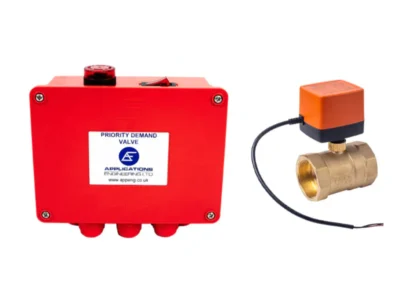Fire sprinkler systems play a pivotal role in protecting lives, properties, and businesses from the devastating impacts of fires. With all intricate mechanisms, valves, and pipes operating properly, they represent one of the most effective ways to quickly control and suppress fires before they spiral completely out of control.
However, despite this, there are some persistent myths and misconceptions about fire sprinklers that remain widely believed. Sprinklers have been proven to reduce the impact of a building fire and are invariably life-saving assets, and these myths lingering can cause people to distrust sprinklers or express concern over their installation and maintenance.
To help separate fact from fiction, this post aims to debunk some of the most common fire sprinkler system myths, so you have a clear understanding of how this critical safety equipment truly works.
Myth: All Sprinkler Heads Go Off at Once
One of the most widely perpetuated myths involves the idea of every single sprinkler head engaging simultaneously during a fire. In reality, only the sprinkler head(s) directly affected by the fire will activate.
Each sprinkler head operates independently on the system. They’re designed to automatically activate once temperatures reach a certain level within the vicinity of that specific head. The remaining closed heads elsewhere stay put until individually triggered by encroaching heat.
Myth: Sprinklers are Triggered by Smoke
Contrary to popular belief, smoke itself does not cause fire sprinklers to activate. As mentioned above, it’s the heat and temperature rise resulting from combustion that triggers the sprinklers nearest the fire source.
Some facilities do opt to integrate smoke detection systems into their fire safety systems, but this equipment remains separate from the sprinkler system itself. Smoke alarms and detectors simply help provide an earlier warning of potential fire incidents so emergency responses like sprinkler activation can follow quickly after.
Myth: They Can Go Off Accidentally
Thanks to their rigid design specifications, accidental sprinkler activation is extremely unlikely to occur. It takes a precise temperature threshold to be reached to open the thermal-responsive element and release water flow from the heads.
Rest assured – routine motions like shutting doors, vibrations, or even forceful impacts aren’t going to inadvertently set them off.
Myth: Sprinkler Water Causes More Damage Than Fire
Due to their life-saving ability to swiftly extinguish fires and prevent escalation, fire sprinklers actually minimise overall water damage compared to what firefighters would need to do in the absence of working sprinklers.
Consider that the average fire is brought under control by just a single sprinkler head discharging around 12-13 gallons per minute, compare that with fire hoses releasing 120-130 gallons per minute until the blaze is extinguished. The sprinkler substantially reduces not only flames but also excess property damage and water saturation.
Trust the Experts for Reliable Fire Sprinkler Protection
Don’t let misinformation hold you back from reaping the full safety benefits of automatic fire sprinkler systems. These systems offer proven effectiveness at minimising injury, loss of life and property damage from fires when implemented correctly with quality components.
Applications Engineering supplies premium sprinkler system products, from robust flow pressure switches to durable control valves, piping components and more. With our industry-leading expertise, we can provide the recommended products that specifically suit your facility’s layout, processes, and fire suppression needs.
With our rapid next-day delivery services and wide product availability at our warehouse in Sussex, you can install reliable, approved fire sprinklers to safeguard your building in no time. Get in touch with our team to see how you can enhance your building fire protection today. We’ll dispel any other lingering sprinkler system myths in the meantime!
Share This Post




